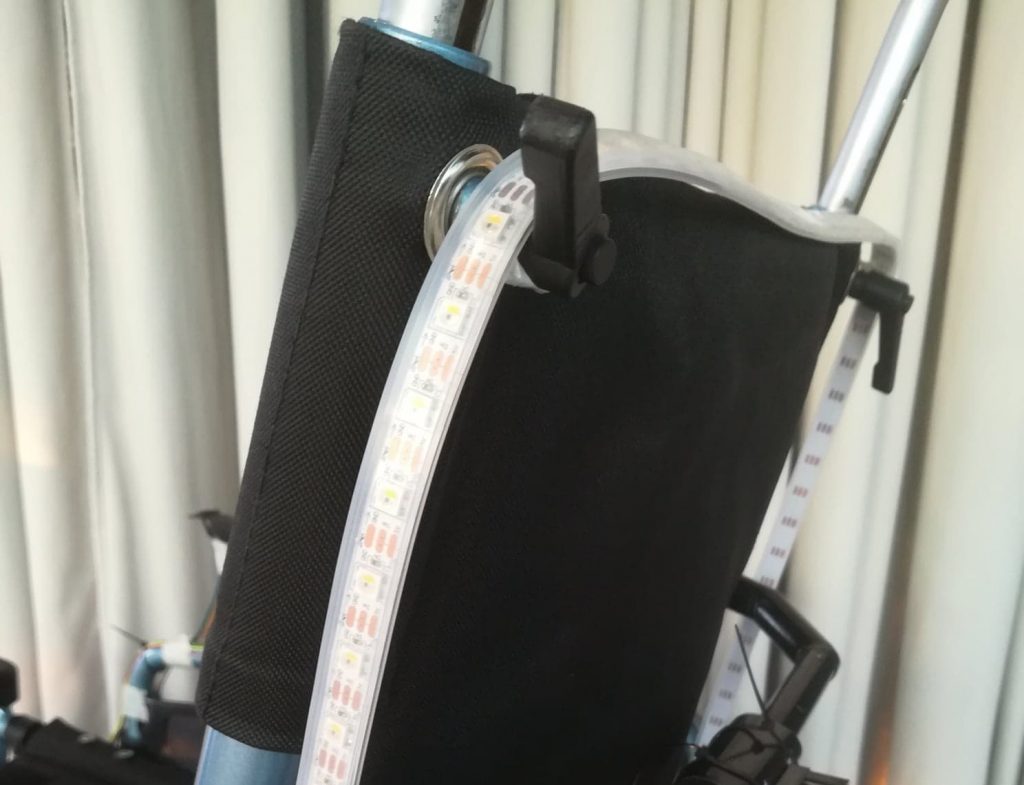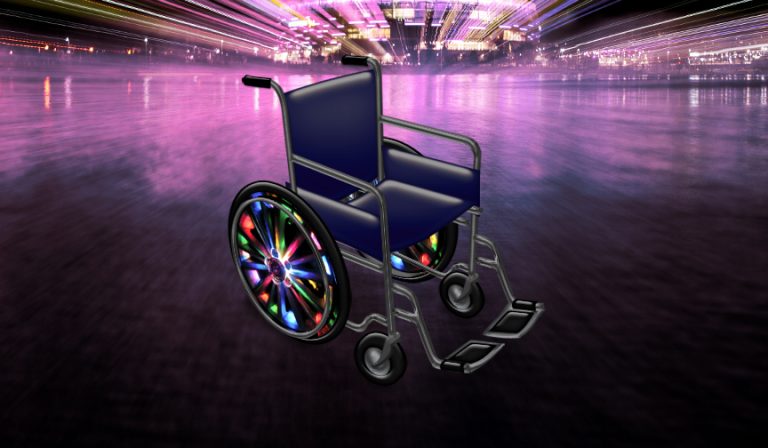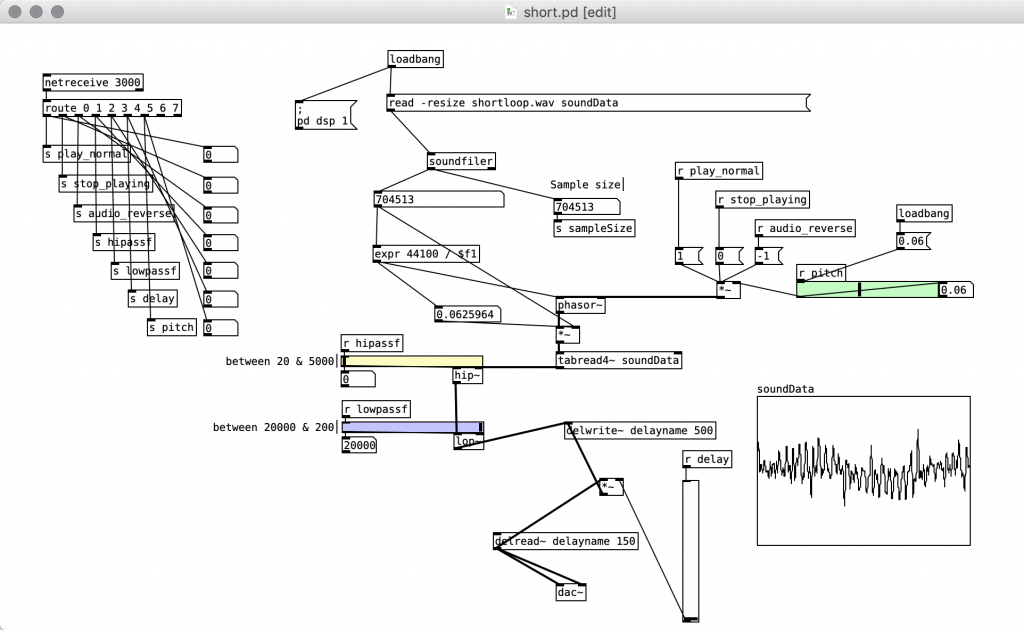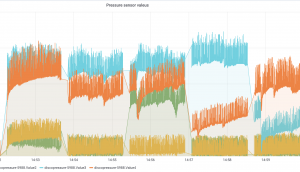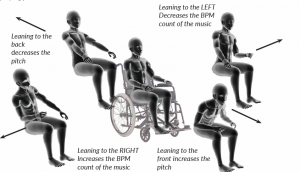Disco Wheelchair
Disco Wheelchair
Designing a wheelchair that is the centre of attention at a party by connecting the wheelchair to the music and lights.
Project details
Summary
The goal of this elective was to create a working prototype of an IoT product. As a product, we were given a wheelchair. We specified this to a wheelchair that allows children to become the centre of the party. We envisioned a wheelchair which could control the music similarly to how a DJ could control the music. In this project, we created a working prototype of a wheelchair which could pause, play and skip tracks, adjust the play speed, and high and low pass filters. The input for these controls is based on gestures and postures. For the gestures a adafruit gesture sensor was used. For the postures, several pressure sensors (FSR) were used. The presure from each sensor was used as input for a classifiaction algorithm created through machine learning.
Sensors, Actuators & Controllers
At the centre of the electronics in the wheelchair lays an Arduino mega and a Raspberry pi. The Arduino is a microcontroller and is the interface between all the sensors and the LED strip. The Raspberry Pi is a single-board computer and is used for the more computational intensive processes such as playing and adjusting music and running the classification algorithm. Connected to Arduino are a led strip and all the sensors: a microphone, a proximity sensor, a gesture sensor and 4 pressure sensors. Connected to the Raspberry Pi is a speaker.
The music
To play and manipulate the music we used Pure Data on the Raspberry Pi. Pure Data is a visual open-source programming language for multimedia. It gives us basic music controls, such as pause, play, forwards and backwards but also more advanced such as speeding up or slowing down the music and adding low and high pass filters. Pure Data receives its command to apply these controls through TCP communication from a python script that is also running on the Rapsberry Pi. This python script gets input form the adruino through the serial port uses this to determine what commands to send to Pure Data.
Proximity sensor
The proximity sensor is a SHARP 2Y0A02 and is used to determine whether somebody is close to the wheelchair. It is connected to the Arduino which preforms a bit of processing, translating the voltage values to a distance in cm. The Arduino then sends this data to the Raspberry Pi through the serial port. On the Raspberry Pi, the python script reads the serial port and uses the values to determine if sombody is close to the wheelchair. If that is the case is passes a command to Pure Data using TCP to add an sample on top of the music that is already playing.

Gesture sensor
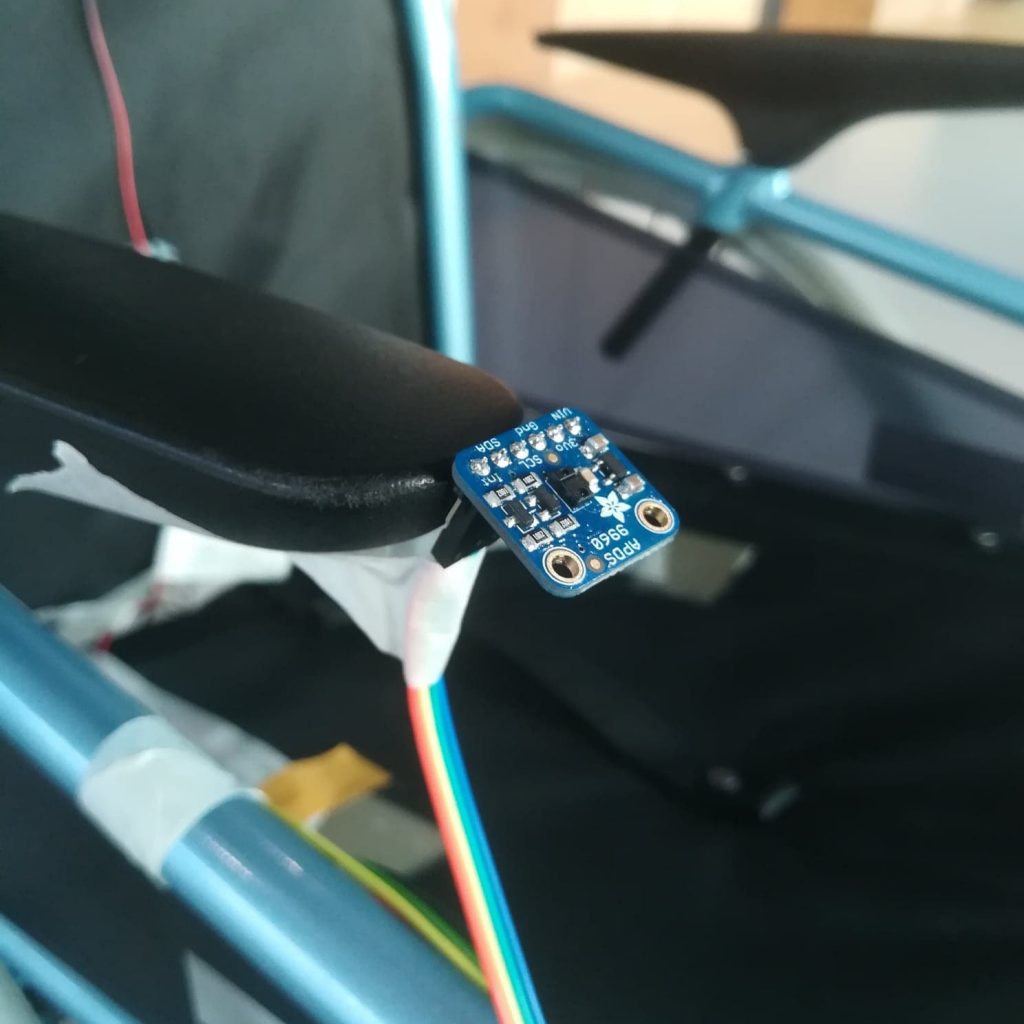
To detect gestures the Adafruit APDS9960 is used. It is connected to the arduino and uses a library provided by adafruit. This library procces the input from the senors and classifies this into 4 gestures, up, down, left and right. These were then communicated to the raspberry through the serial port and passed along to Pure Data through TCP.
Pressure sensor
To determine the posture of the person sitting in the wheelchair, four pressures sensors were added to the sitting and back surface of the wheelchair. Each sensor is connected to the Arduino which passes the values along to the Raspberry Pi. On the Raspberry Pi, it passes the values to a trained classification algorithm determining the posture the person is currently sitting. The output of this algorithm is them again communicated to Pure Data to apply the appropriate commands.
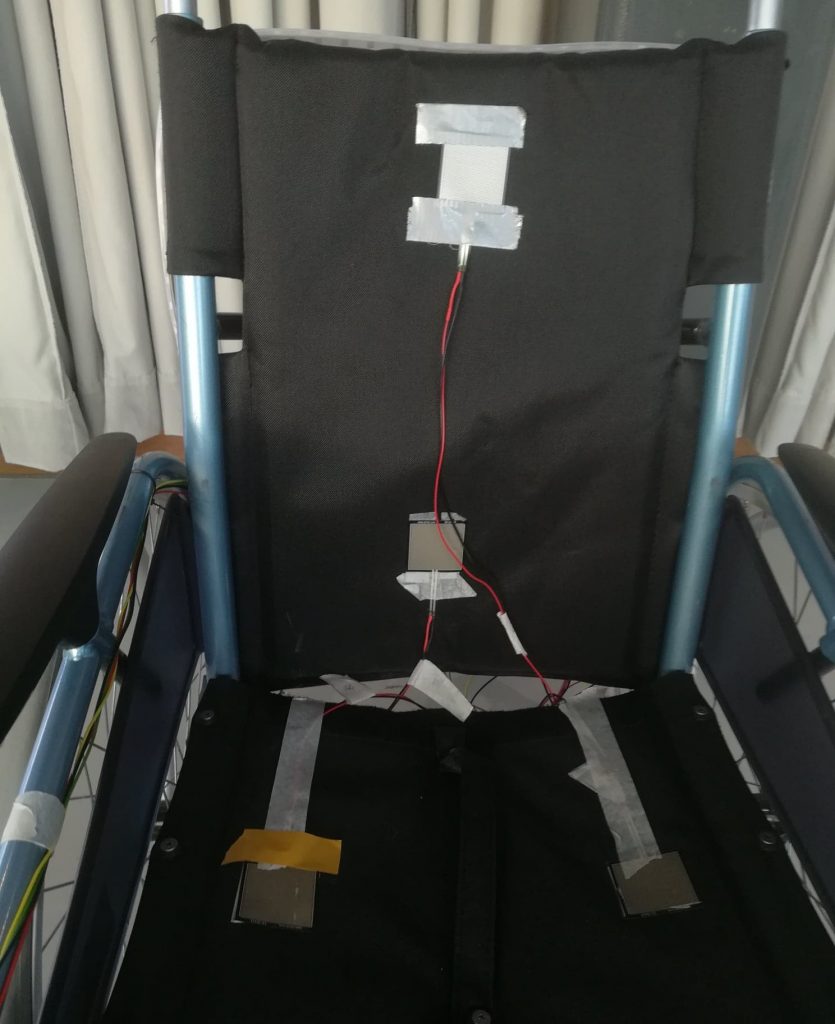
Lights
To add ad bit of extra flair to the wheelchair we also added an LED strip. To control this strip we used a Sparkfun sound detector. This allowed us to detect the beat and use this to match it to the output of the LED strip, creating a disco like effect where the music and the lights are in sync.
